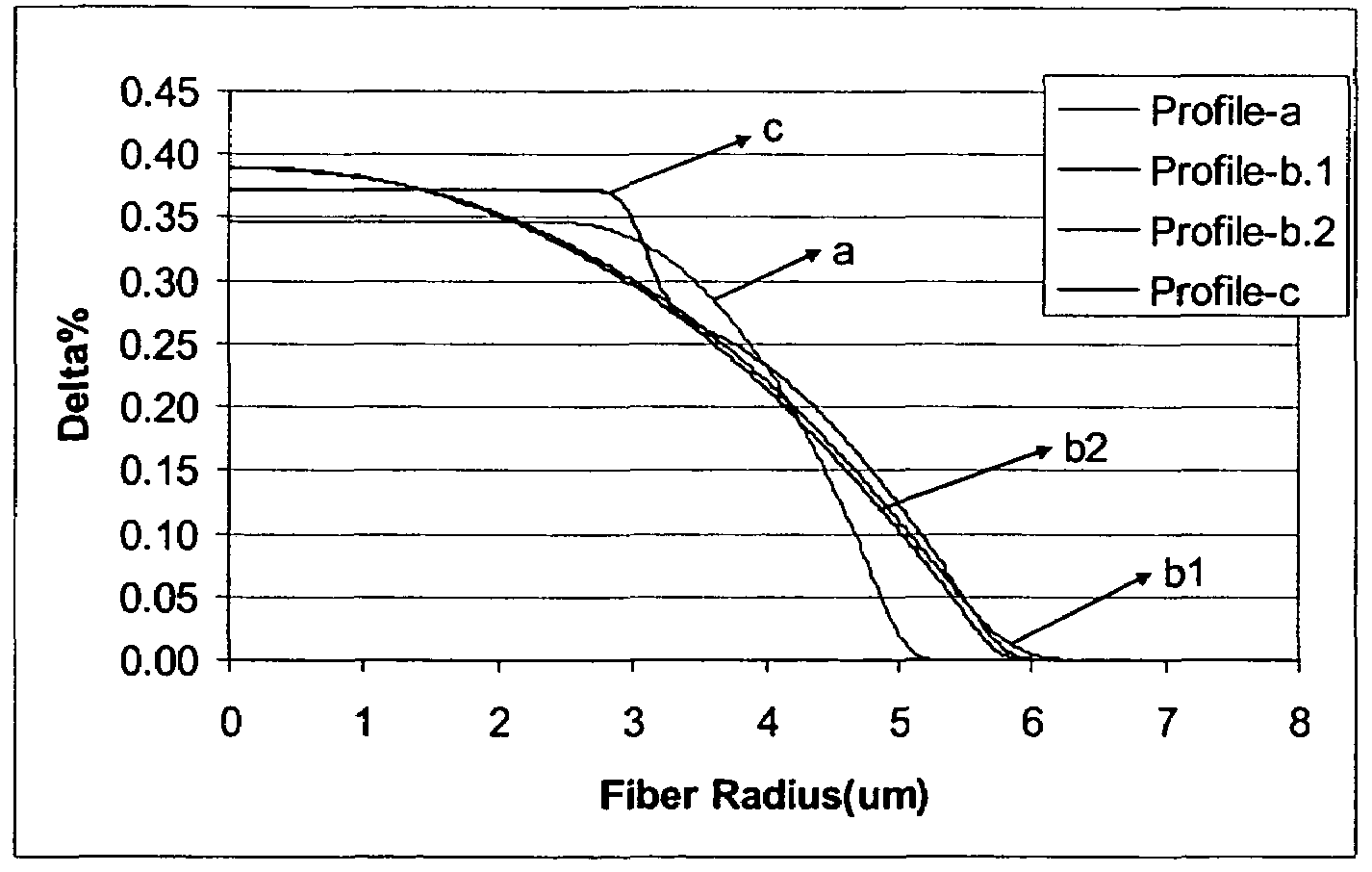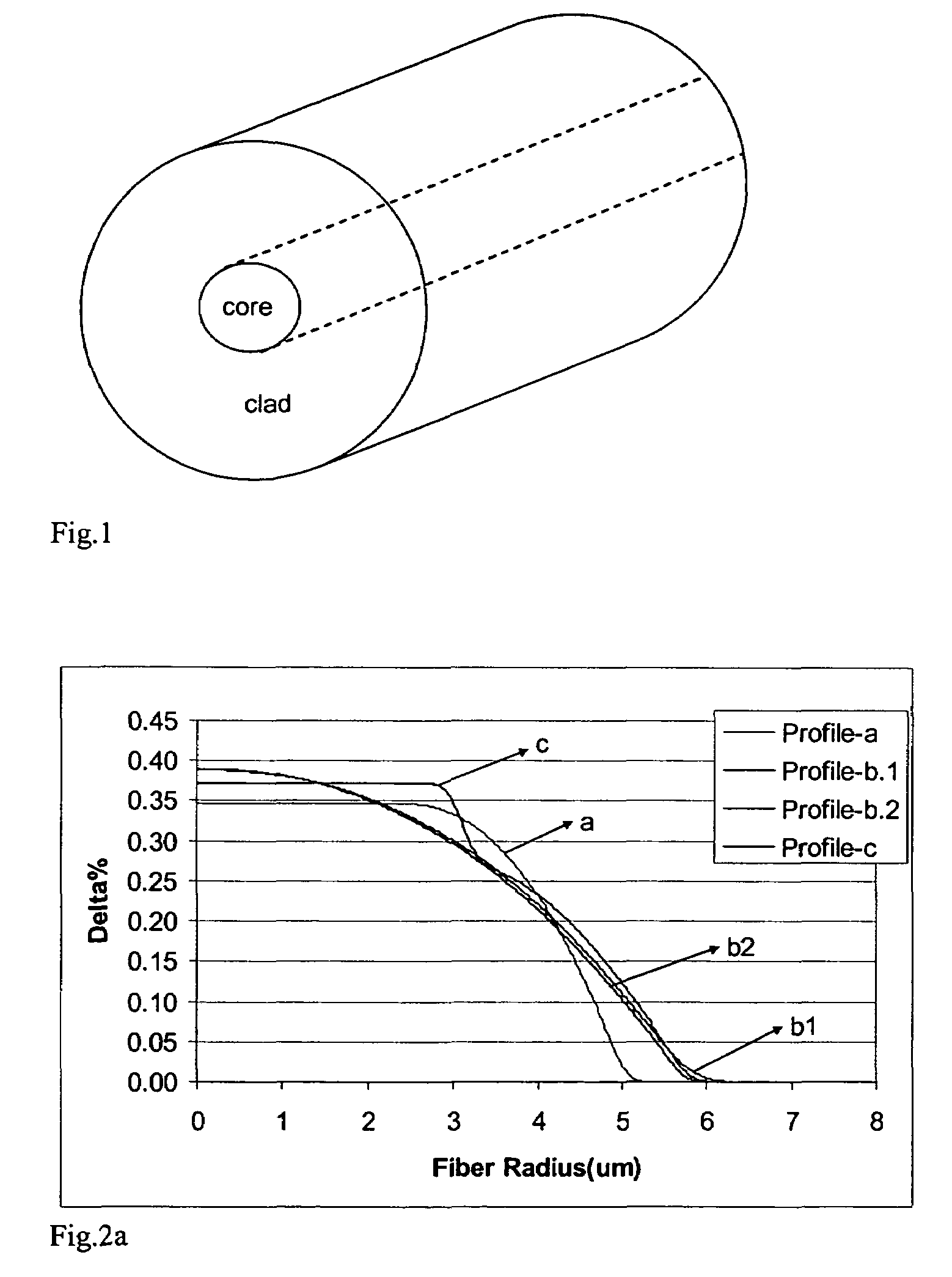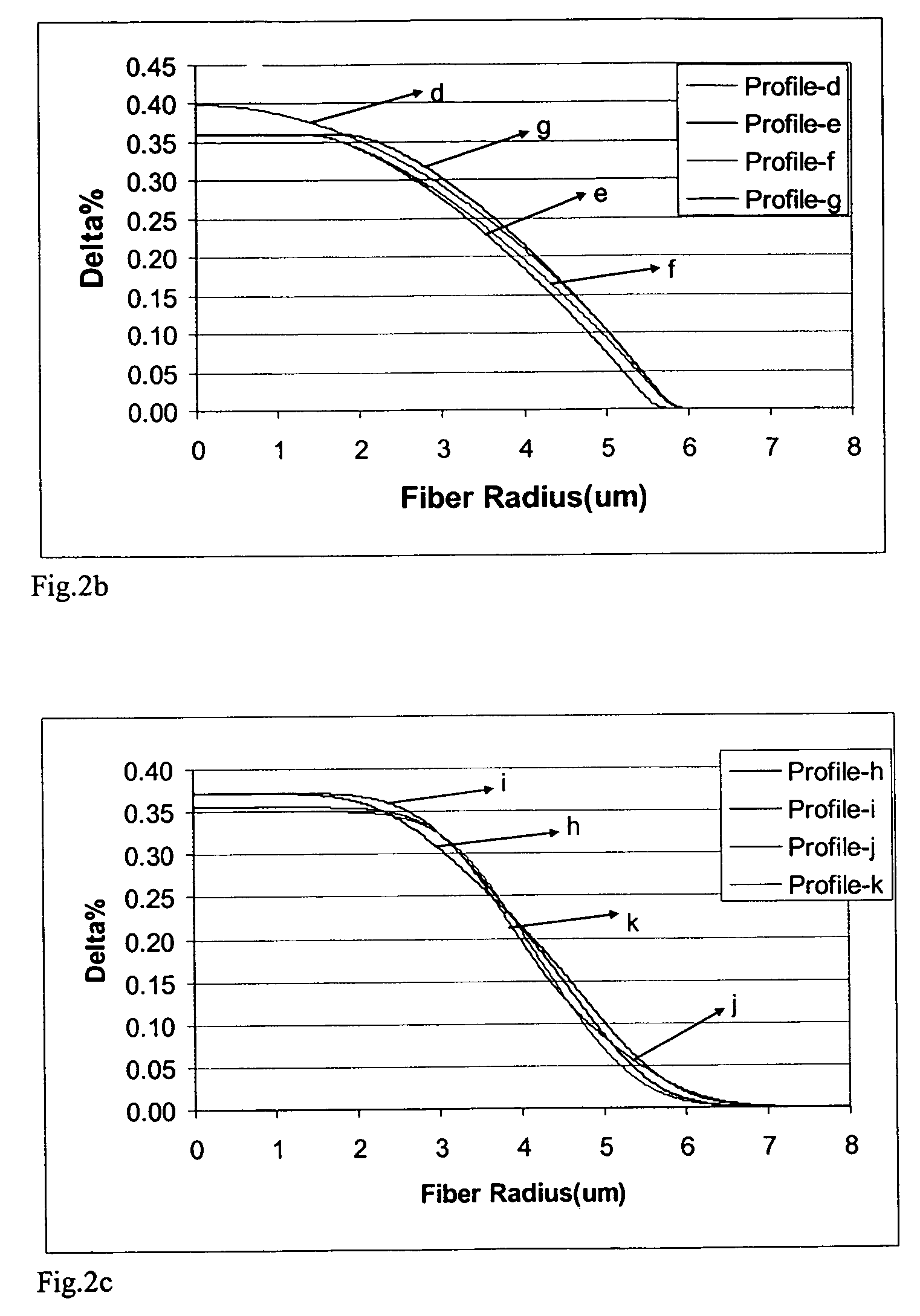Low attenuation optical fiber
a low-attenuation, optical fiber technology, applied in the field of optical fibers, can solve problems such as signal degradation, and achieve the effects of low attenuation, low small angle scattering, and low attenuation
- Summary
- Abstract
- Description
- Claims
- Application Information
AI Technical Summary
Benefits of technology
Problems solved by technology
Method used
Image
Examples
Embodiment Construction
[0024]Reference will now be made in detail to the present preferred embodiments of the invention, examples of which are illustrated in the accompanying drawings. Whenever possible, the same reference numerals will be used throughout the drawings to refer to the same or like parts. One embodiment of the optical fiber waveguide of the present invention is shown in FIG. 1, and is designated generally throughout by the reference numeral 10.
[0025]In accordance with the invention the optical waveguide fiber includes a core 12 and at least one cladding 14 surrounding the core 12. In these exemplary embodiments the cladding 14 is pure silica and the silica core 12 is doped with Ge to obtain the desired change in relative refractive index (3.5–4.2 mole % of Ge). The diameter of the core 12 varies from 9 μm to 16 μm. The outer diameter of the cladding 14 of these exemplary optical fibers 10 is about 125 μm. The exemplary refractive index fiber profiles of these optical waveguide fibers 10 are...
PUM
 Login to View More
Login to View More Abstract
Description
Claims
Application Information
 Login to View More
Login to View More - R&D
- Intellectual Property
- Life Sciences
- Materials
- Tech Scout
- Unparalleled Data Quality
- Higher Quality Content
- 60% Fewer Hallucinations
Browse by: Latest US Patents, China's latest patents, Technical Efficacy Thesaurus, Application Domain, Technology Topic, Popular Technical Reports.
© 2025 PatSnap. All rights reserved.Legal|Privacy policy|Modern Slavery Act Transparency Statement|Sitemap|About US| Contact US: help@patsnap.com



